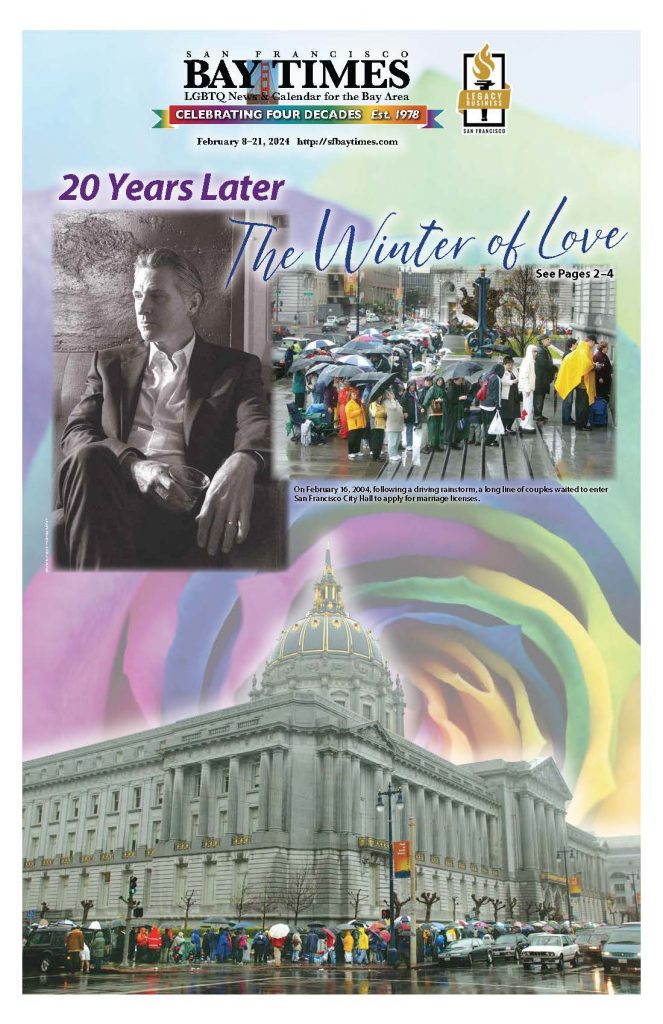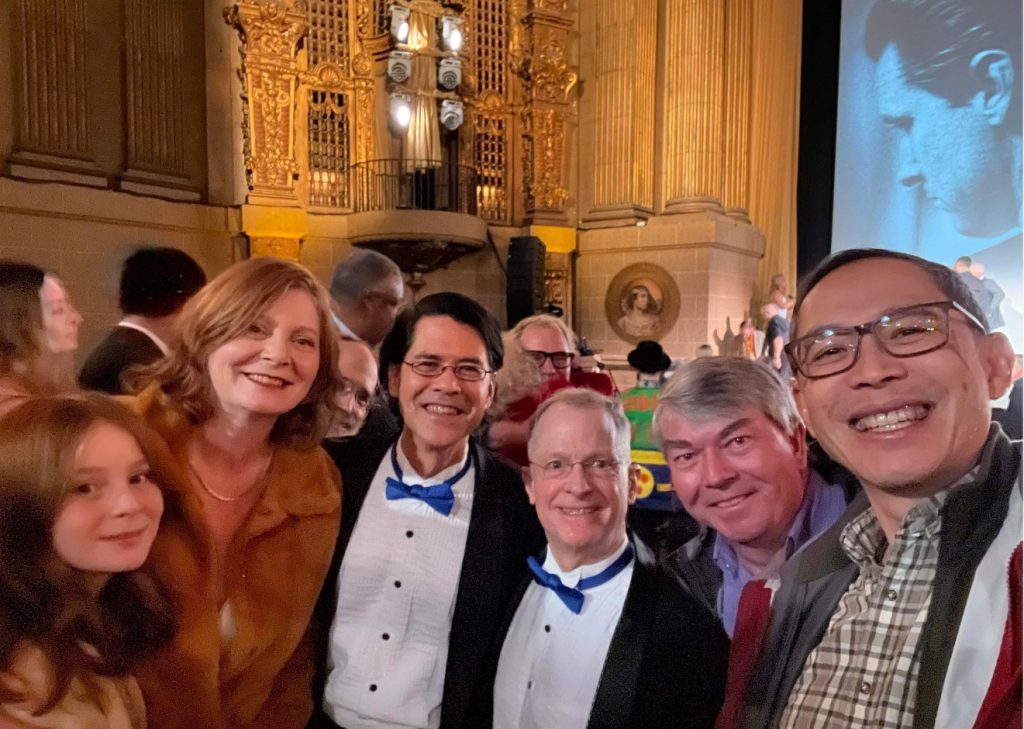From Stonewall to ‘I Do’: Celebrating San Francisco’s Winter of Love 20 Years Later

By John Lewis and Stuart Gaffney–
It was 20 years ago this month when Gavin Newsom burst open the doors of San Francisco City Hall for all loving, committed LGBTIQ couples to marry, commencing the city’s historic “Winter of Love.” Over 8,000 queer people from 46 states and 8 countries flocked to City Hall to proclaim two words that reverberated around the world: “I DO.” With each wedding vow taken, we stood up boldly for our love, dignity, and equality like never before.
The marriages continued for a month before the California Supreme Court put a stop to them. During those heady days, it felt almost as if homophobia had ended. One friend analogized it to the fall of the Berlin Wall, with as many LGBTIQ couples as humanly possible breaking through barriers of discrimination to come to San Francisco to marry. We were lucky to be one of the first ten couples to marry because we had come to City Hall on February 12, 2004, to attend Marriage Equality California’s annual rally and demonstration for the right to marry—which by chance took place just as the city was just starting to marry queer couples.
The Winter of Love ignited the broader nationwide freedom to marry movement that had been operating relatively quietly before. The City of San Francisco shone a spotlight on the lives and love of LGBTIQ couples in all their diversity in an unprecedented way. We collectively won nationwide marriage equality at the U.S. Supreme Court just eleven years later in 2015. Bill Frist, Republican Senate Majority Leader back in 2004, warned that what took place in San Francisco could set off a “wildfire” of gay marriage that would spread across the country. It did.
In reflecting on the twentieth anniversary of the Winter of Love, our thoughts turned to another pivotal event in queer American history, the 1969 Stonewall Riots. On a hot and humid June night nearly 55 years ago, the queer patrons of the Stonewall Inn in New York City fought back against the police as the cops raided the bar.
Like Stonewall, San Francisco’s Winter of Love was a profound act of defiance against government discrimination. Stonewall was a rebellion against brutal and unjust police harassment of gay people that destroyed lives. The Winter of Love was a revolution of love, proclaiming queer couples’ rights to full dignity and equality in the face of the federal and state governments treating us as second-class citizens. It was, in a sense, Stonewall on love steroids.

Photo Wikipedia.com
For over half a century, our community has commemorated Stonewall with annual Pride marches, parades, festivals, and celebrations. When a queer person walks down the main street of their hometown in an annual Pride parade, they celebrate their coming out as a beautiful LGBTIQ person with nothing to hide about who they are. The Winter of Love was a giant coming out to the nation and the world of our loving relationships and families, and both an invitation and demand for society to accept and embrace them.
The Winter of Love represented the fruition of our community’s tireless efforts since Stonewall in other ways as well. While Stonewall was an uprising against the police, the San Francisco Sheriff’s Department steadfastly protected same-sex couples’ ability to marry during the Winter of Love. They maintained safety, including removing and arresting right-wing protesters who attempted to stand in the way of love by blocking the entrance to the Clerk’s office.
The police raids at Stonewall in 1969 were part of an intensification of police raids against LGBTIQ bars that took place in the context of then-New York City Mayor John Lindsay’s re-election campaign. The Winter of Love was the brainchild of San Francisco Mayor Gavin Newsom himself. Newsom put his political career on the line for the LGBTIQ community just 34 days after he had been elected San Francisco’s mayor. It marked the first time a big-city mayor had taken such a bold and risky step to support queer people.

activists who married during the Winter of Love; John Lewis and Stuart
Gaffney; and long-time marriage equality leader Molly McKay-Williams
with her daughter McKenzie at the Castro Theatre on February 2, 2024
PHOTO COURTESY OF MOLLY MCKAY-WILLIAMS
Newsom’s actions stood as a model for California Attorney General and then Governor Jerry Brown, who four years later refused to defend the anti-marriage equality Proposition 8. Kamala Harris, as California Attorney General, did the same when she took office in January 2011. A month later, President Obama directed the U.S. Justice Department not to defend the infamous Defense of Marriage Act (DOMA). In 2015, the administration threw the weight of the entire federal government in support of marriage equality before the U.S. Supreme Court.
At a festive celebration of the Winter of Love last week at the Castro Theatre, Governor Newsom rocked the house when he reminded everyone of the extent to which the marriage equality “journey and conversation started quite literally right here in San Francisco.” But Newsom cautioned last week that equality was not a fixed place but a continuing effort, pointing to our need to stand up against what he termed a “full-on assault” taking place now against LGBTIQ rights, and especially against transgender people.
The Winter of Love was a collective effort of countless queer people in love, advocating for themselves through the truth of their lives with the full support of their friends and allies and San Francisco’s leadership. That love and commitment must not be static history but live on like Stonewall as dynamic inspiration to our community as we confront the struggles of today and together build an even brighter tomorrow.
John Lewis and Stuart Gaffney, together for over three decades, were plaintiffs in the California case for equal marriage rights decided by the California Supreme Court in 2008. Their leadership in the grassroots organization Marriage Equality USA contributed in 2015 to making same-sex marriage legal nationwide.
626 and Beyond
Published on February 8, 2024








Recent Comments